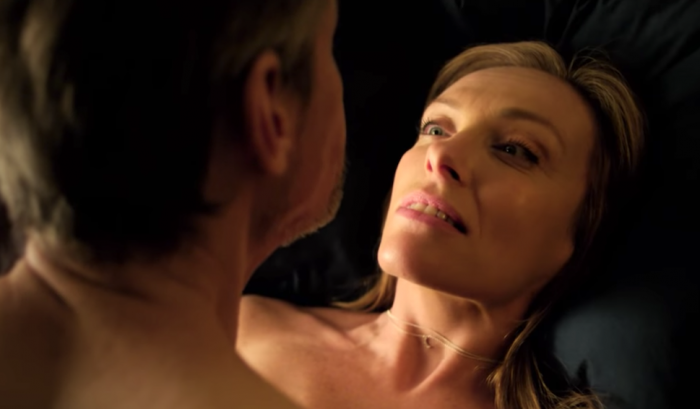I vividly remember the first time I set a real boundary, because I had a full-blown panic attack.
An incident of sexual assault had occurred during my stay in a residential trauma treatment facility. After a lifetime of never saying “No,” I was finally in an environment where I felt able to stand up for myself.
After doing so, however, a gut-clenching fear overtook my body, and all of my senses were telling me that I had no right to exist. I immediately fell into self-judgment and doubt. It was excruciating.
Almost seven years later, it still plays like a movie in my consciousness, because I was so terrified about speaking my truth that I actually dissociated and left my body. I still struggle to connect to the rage and fear that flooded me that day.
It’s also the day I finally learned how a lack of personal boundaries in my life was keeping me vulnerable and stuck in the cycle of abuse. In truth, the people whose traps I fell into, over and over, counted on one thing alone: my utter lack of boundaries.
While we are never responsible for other people’s behavior, that day I realized that mastering boundaries was my part in keeping myself as safe and sane as I possibly could.
In spite of what I’ve survived, I was and am determined to break the cycle of abuse. In my quest to overcome my deep fear of and confusion about boundaries, I have uncovered some keys to the puzzle they seem to create for so many us survivors of trauma.
Secret #1: In order to set a boundary, you must tune in to your “negative” emotions.
As survivors of dysfunctional relationships, we often learn that our negative emotions are not allowed, welcome, or valid. We instead learn to stuff and hide our reactions to the abuse we endure, often as a literal act of survival.
This can make tuning into and getting comfortable with our negative feelings really, truly difficult. In fact, it can be as terrifying as facing actual death. We may also be running on autopilot, subconsciously repressing these feelings before we even know they are there.
We may be attracted to narratives that preach positivity and bypassing because our difficult feelings simply don’t feel safe. Understanding this can breed a lot of self-compassion around this process, which is all about learning to protect ourselves when we were programmed to do the opposite.
For those of us who learned to repress our painful emotions, what we actually learned was to repress and avoid our fundamental compass to creating boundaries. You see, it’s emotions like anger, fear, grief, disgust, horror, sadness, shame, and rage that tell us where our “No” is in the first place.
When we are disconnected from and avoidant of these uncomfortable feelings, we are disconnected from the foundation we need to begin setting an actual boundary, itself.
The best way I’ve found to tap into these feelings is to start to notice how my body is feeling. As survivors of abuse, we are often disconnected from our physical bodies, and so it’s no wonder we don’t notice the signals.
We can begin to tune into this disconnection by beginning to notice physical discomfort and distress. For myself, this didn’t begin until I had unwittingly been disconnected so long that I developed a host of painful chronic illnesses, all of which are linked to abuse trauma.
So, the first step in setting healthy boundaries means committing to exploring our pain and learning how to turn toward it. A process that is not for the faint of heart and requires a commitment to learning to be compassionate with ourselves along the way.
Secret #2: In order to set a boundary, you must stop negotiating with your intuition.
As survivors of abuse, we have been programmed to ignore, minimize, criticize, and silence our inner voices. As adults learning the art of self-protection (aka, boundaries), we must begin to tune into this buried inner voice and simultaneously turn down the volume on our internalized abuser.
When we have spent our whole lives silencing our intuition and mentally beating ourselves up, we can have a hard time even finding it. In all cases, however, our intuition is still there, patiently (or, sometimes, loudly and frantically) waiting for us to listen.
We may need help in this process from a healer or therapist who is trauma competent. We may need to pick up new practices—such as this amazing Kundalini meditation—or some other form of mindfulness. We may need to commit to cultivating practices so we can begin the process of learning to listen to ourselves.
We may not even know what we need, yet, or how to go about getting it. This is because what not having boundaries means, at the heart of the issue, is that we don’t trust ourselves.
As survivors of abuse, we were taught not to trust our inner voice. In my opinion, this is more devastating to our well-being than the distrust we feel once we label and acknowledge the trauma we have been through.
Learning to set boundaries begins with learning to trust ourselves. When we are struggling with boundaries, we are probably still desperately seeking every answer to our needs outside of ourselves. Unfortunately, this also sets us up to repeatedly be taken advantage of and manipulated by people who may not have our best interests at heart.
Every time we find ourselves doubting our inner guidance and wisdom, we are in an argument with our intuition. We are also being given the chance to take that self-doubt and turn it outward where it belongs. Once again, negative thoughts and emotions are the perfect roadmap to learning to set healthy boundaries in the world. Read. That. Again.
You see, for survivors of dysfunctional boundary-less dynamics, every time something was off in our inner or outer world, we learned that something was wrong with us. We can begin to take our power back by noticing when we get into these arguments with ourselves and, without falling into more self-judgement, simply see that inner doubt as a guide to where our outer boundaries lie.
Secret #3: In order to set a boundary, you must allow yourself to sit in discomfort.
Learning to tolerate our personal discomfort around setting boundaries may be the most difficult part of the whole process. There is a distinct discomfort that can come from speaking our truth and asserting our boundaries when we have never or rarely felt safe enough to do so.
This discomfort can be so extreme that we will avoid any and all attempts to speak our truth, assert our right to a boundary, or hold our ground. All requirements for creating and maintaining healthy boundaries in life. But there is no way around it; we must learn to endure.
If we want to have boundaries, we are going to have to develop tools and coping skills for the extreme discomfort it can cause us to set them, both with ourselves and with others. Like my story at the beginning of this article, we may have such an aversion to boundaries that we go into a panic and just keep avoiding them.
Unfortunately, as adults who are fed up with being taken advantage of, we are going to have to turn toward that discomfort and keep reassuring ourselves that we made the right choice, probably for a while. Maybe over and over. We may cave and have to try again. We may find we mentally beat ourselves back into submission.
This is not a clean, clear, or cut-and-dry process. In my experience, it is a messy, raw, painful, and deeply confusing one, filled with lots of mistakes. It requires a dedication to cultivating kindness toward and patience with ourselves. Qualities we are probably also needing to brush up on or learn for the first time.
This is because as we start to acknowledge our painful emotions (messengers), tune into our inner voice, learn how to respect ourselves, and begin to set boundaries, we often come to realize that the entire world around us is out of alignment with our deepest truth.
It can and will feel like we are selfish, silly, stupid, too sensitive, audacious, and overreacting. It’s important to note when we have these feelings about boundaries that we are just triggering the old abuse narratives in our mind that keep us from having limits so people can keep manipulating us. Rewiring our neural circuitry and protective layers of personality (codependency) takes time.
We may find that we need to set major boundaries, even create walls, between ourselves and the people in our lives with whom we initiated relationships. Ones that were created before we knew we had a right to protect ourselves. This can be a deeply lonely process, a dark night of the soul.
There is no way around the fact that learning to set boundaries is a terribly awkward and even painful process. This is not about reading a cute, neat, tidy three-step guide and then it’s over. We’re all good. We got it.
Despite what all of our egos would prefer, this is not a quick fix. It’s a lifelong commitment to learning how to build trust with ourselves when we come to realize that we are the ones who have been abandoning us, all along.
Setting boundaries feels dirty, gritty, and raw. It goes against the well-worn grooves of unconscious assent we laid down in order to survive traumatic experiences. It shifts our whole perspective and uncovers the pain that we have been silently enduring, oftentimes for years, without question.
It can make us question the whole world around us, and bring harsh realities crashing down upon us. It means we’re going to make mistakes, we’re going to feel “crazy,” we are going to think we are the abusers now, and we will often feel like we generally have no right to take up space.
But learning to set boundaries also means freedom. Freedom to care for ourselves in the ways we really need to. Freedom to assert our right to independence, our own well-being, and pursuing that which truly brings us joy. Freedom from giving ourselves away to anyone and everyone around us until there is nothing left. Freedom to create the lives we are secretly longing for. Free from the cycle of abuse and pain we so desperately wish to escape.
So go ahead. Get uncomfortable, turn toward your painful thoughts and emotions, take a good long look at where you might need a boundary in your life, and give yourself the permission to finally set one. Acknowledge the doubt and discomfort that comes afterward as the receipt that you have made the right choice and are building a whole new pathway to your own freedom.
Boundaries are the keys you have been waiting for, all along.
AUTHOR: JANELLE BROWN
IMAGE: YOUTUBE


No comments:
Post a Comment